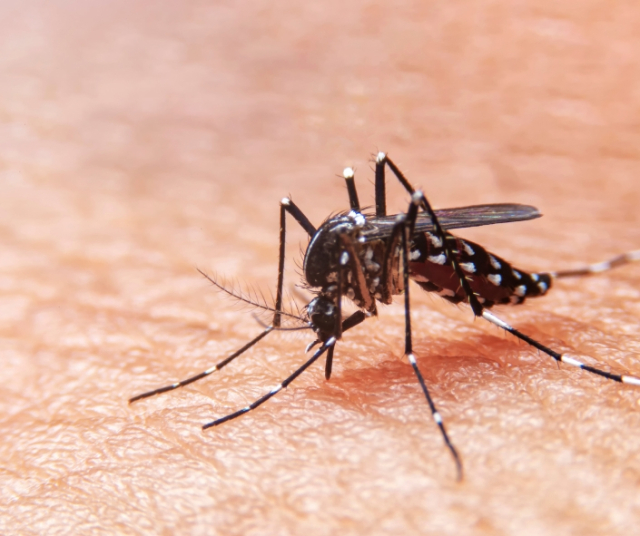Dengue is a mosquito-borne viral disease that has become a major public health problem in many parts of the world, especially in tropical and subtropical regions. This disease can range from mild cases to severe forms that endanger people's lives.
Causes of Dengue
Dengue is caused by the dengue virus, which is transmitted to humans through the bite of infected Aedes mosquitoes, primarily the Aedes aegypti mosquito. These mosquitoes breed in areas with standing water, such as containers, old tires, vases, and garbage cans. When an infected mosquito bites a person, the virus enters their bloodstream and begins to multiply in their body, triggering the disease.
Types of Dengue
There are four types of dengue virus, called serotypes: DEN-1, DEN-2, DEN-3, and DEN-4.
Dengue by serotype DEN-1:
The DEN-1 serotype is one of the four serotypes of the dengue virus. Infection by this serotype can range from a mild disease to more serious forms, such as severe dengue. Immunity acquired after infection with the DEN-1 serotype provides specific protection against this particular serotype, but not against the other serotypes.
Dengue by serotype DEN-2:
The DEN-2 serotype is another serotype of the dengue virus. As with the other serotypes, infection with the DEN-2 serotype can vary in severity. Re-exposure to this specific serotype may increase the risk of developing a more severe form of the disease. Immunity acquired after infection with the DEN-2 serotype provides specific protection against this serotype but not against the others.
Dengue by serotype DEN-3:
The DEN-3 serotype is another serotype of the dengue virus . Infection with this serotype can cause a variety of symptoms, ranging from a mild flu-like illness to more severe forms of illness. Immunity acquired after infection with the DEN-3 serotype provides specific protection against this particular serotype.
Dengue by serotype DEN-4:
The DEN-4 serotype is the fourth serotype of the dengue virus. As with the other serotypes, infection with the DEN-4 serotype can vary in severity. Re-exposure to this specific serotype may increase the risk of developing a more severe form of the disease. Immunity acquired after infection with the DEN-4 serotype provides specific protection against this serotype, but not against the others.
It is important to note that repeated infection with different dengue virus serotypes may increase the risk of developing severe or hemorrhagic dengue. In these cases, the body's immune response can be compromised and trigger an excessive inflammatory response, which can lead to serious and life-threatening complications.
In addition to the four main serotypes, other dengue virus serotypes and subtypes have also been identified in some regions. These subtypes may have some genetic differences, which may affect their virulence and the host's immune response.
Dengue symptoms
Dengue can present in different forms, from a mild illness to more serious forms. Symptoms usually appear 4 to 7 days after being bitten by the infected mosquito and may include:
- Sudden high fever.
- Intense headache.
- Pain behind the eyes.
- Muscle and joint pains.
- Fatigue and general weakness.
- Acne.
- Bleeding from the nose or gums.
- Nausea and vomiting.
- Dengue Treatment
There is no specific treatment for dengue, and the main focus is symptom relief and management of complications. Some general treatment measures include:
Rest and rehydration: It is important to get adequate rest and drink plenty of fluids to prevent dehydration , especially during the febrile phase of the illness.
Analgesics and antipyretics: Medicines such as paracetamol can be used to relieve pain and reduce fever. However, acetylsalicylic acid ( aspirin )-based medications and nonsteroidal anti-inflammatory drugs ( NSAIDs ) should be avoided, as they can increase the risk of bleeding.
Medical attention: In serious cases of dengue, it is necessary to receive specialized medical attention in a health center. This is especially important if symptoms such as severe abdominal pain, persistent vomiting, shortness of breath, or heavy bleeding occur.
dengue prevention
Dengue prevention is mainly based on measures to control the mosquito population and reduce exposure to bites . Some effective prevention measures include:
1. Eliminate mosquito breeding sites: Reduce standing water by removing containers, covering water containers, and regularly emptying outdoor containers.
2. Use of insect repellents: Apply mosquito repellent to exposed skin and clothing, following the product's instructions.
3. Use of protective clothing : Wear long-sleeved clothing, long pants, and socks to reduce skin exposure to mosquito bites.
4. Use of mosquito nets and adequate ventilation: Use mosquito nets on windows and doors, and make sure that the houses have good ventilation to prevent the entry of mosquitoes.
It is important to seek medical attention if severe or persistent symptoms develop. With a combination of preventive measures and a rapid and appropriate response, we can reduce the incidence of dengue and protect the health of communities around the world.
